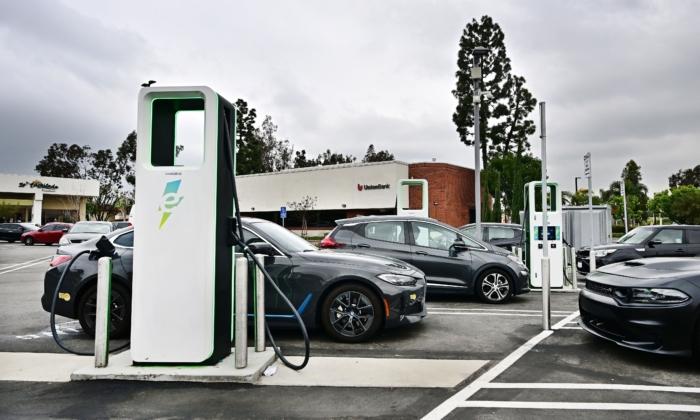A new study by the Manhattan Institute is casting doubt on the degree to which electric vehicles (EVs) are reducing carbon emissions and the economic viability of rapidly adopting such vehicles.
Mr. Mills wrote that determining carbon emissions and future costs for EVs is dependent on many variables that could lead to numerous uncertainties.
True EV Carbon Emissions Unclear: Report
Mr. Mills wrote that while it’s easy to calculate a traditional vehicle’s carbon emissions, it’s “impossible” to do so with EVs.“While, self-evidently, there are no emissions while driving an EV, emissions occur elsewhere—before the first mile is ever driven and when the vehicle is parked to refuel,” he wrote.
Whereas a traditional car will use a fuel tank carrying about 80 pounds of gasoline, Mr. Mills wrote that EV’s rely on a battery typically weighing about 1,000 pounds and comprised of copper, nickel, aluminum, graphite, cobalt, manganese, and lithium. Mr. Mills noted research showing limited data about the emissions produced to obtain these minerals and the possibility that these emissions can “vary considerably across companies and regions.”
He explained that most estimates for EV carbon emissions are based on calculations of average emissions in the production and recharging process, but that the true energy used can vary widely.
Mr. Mills wrote that its easy to estimate carbon emissions from traditional vehicles by simply knowing the miles they’ve gone, and that the emissions produced from manufacturing these cars and producing the gasoline needed to fuel them account for about 10 to 20 percent of an internal combustion engine vehicle’s lifetime emissions. He said by comparison, there are a lot of unknowns about the emissions brought about in the initial production of an EV. He wrote that the emissions created by recharging an EV battery will also depend on a number of variables like the type of energy grid used and hourly variations in electricity production.
Costs of EVs and Traditional Cars
While asserting that the carbon offset by EVs is highly variable, Mr. Mills argues that the trajectory for EV costs is similarly reliant on a number of different factors. He noted that the costs of producing EV batteries hasn’t followed a consistent trajectory over the years.“The claim of plummeting battery costs is true only in hindsight, measured since the inception of lithium technology; this is a trend typical for all new technologies. But like all technologies in the world of atoms, not bits, after early years on the manufacturing learning curve, the rate of improvement slows dramatically,” he wrote. “Over the past half-dozen years, battery cost has decreased slowly; and over the past couple of years, prices have reversed. Battery costs have risen 20% since 2021.”
“Future battery costs now depend almost entirely on a single fact: Basic materials now account for 60%–80% of the cost to make batteries. Even if labor and capital costs decline (both are currently trending up), battery prices (and future upstream emissions) are now firmly in the hands of decisions made by global miners and refiners,” he added.
Mr. Mills cast further doubt on the timeline for rapidly transitioning to EVs, stating a greater supply of minerals will be needed to provide the materials for these EVs. He noted an estimate by the International Energy Agency (IEA) that found it takes 10 to 16 years to open a single new lithium mine.





